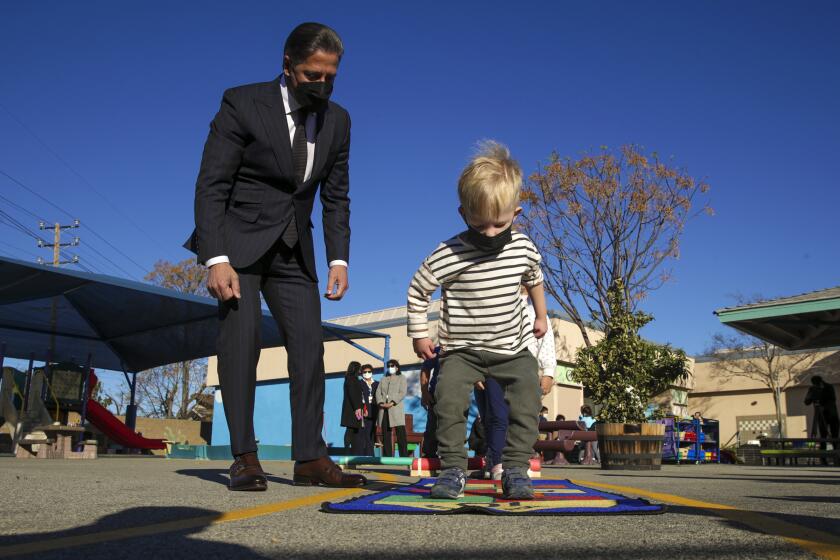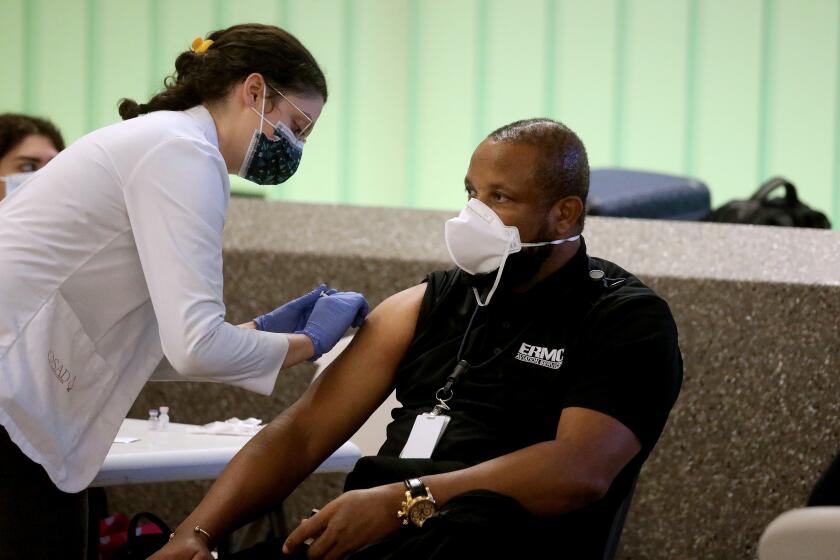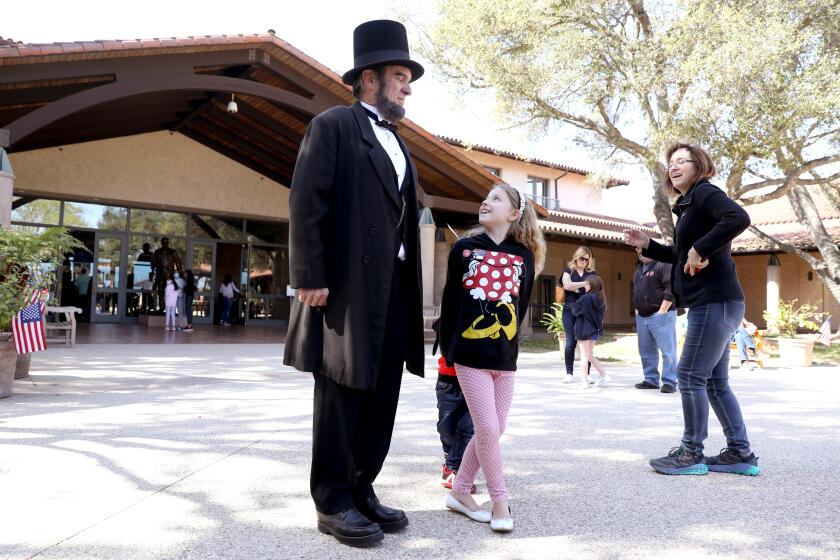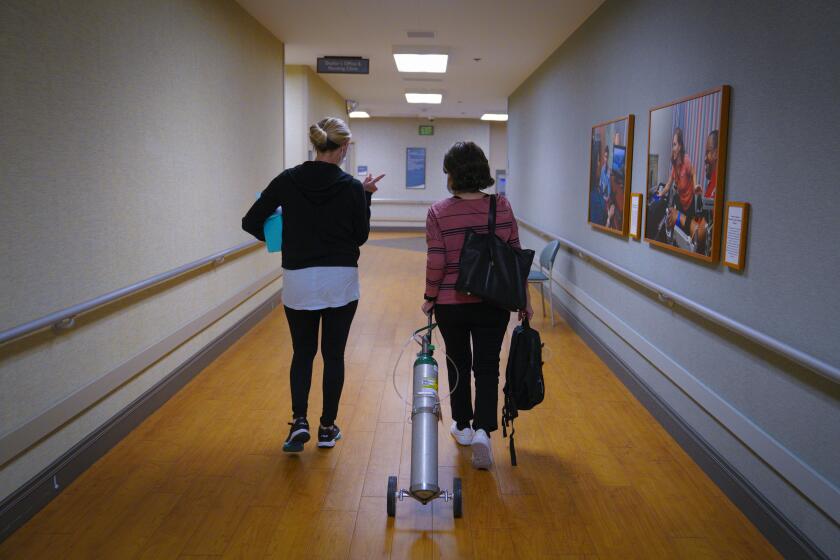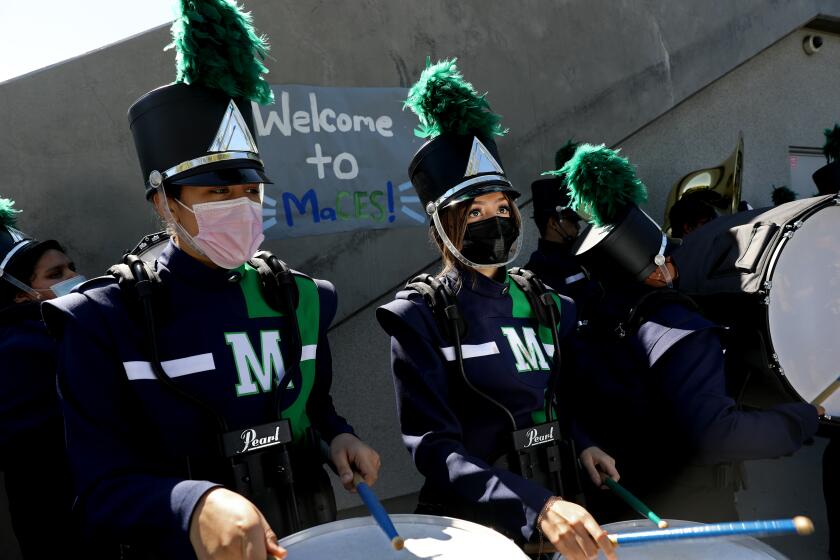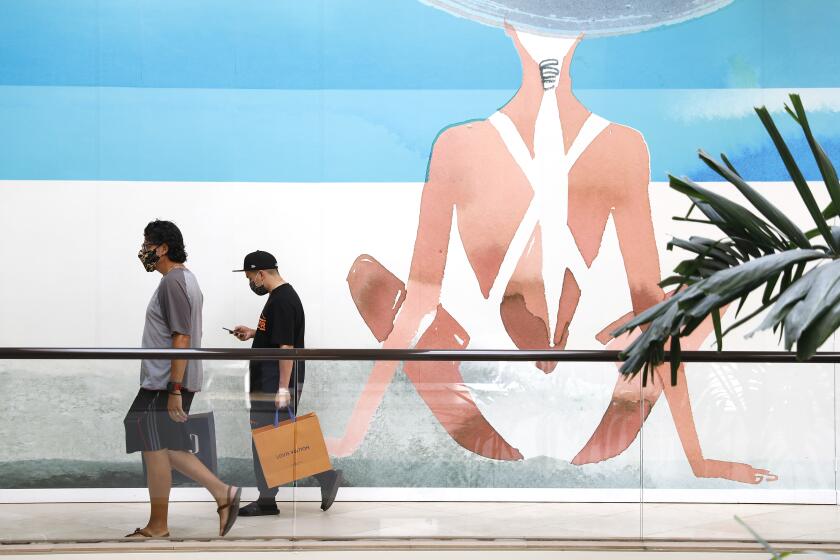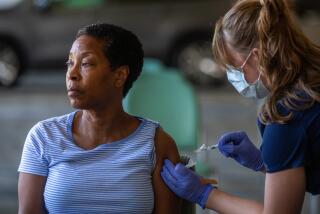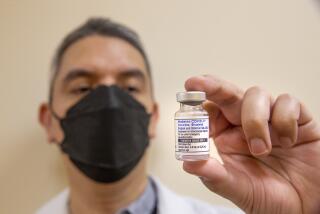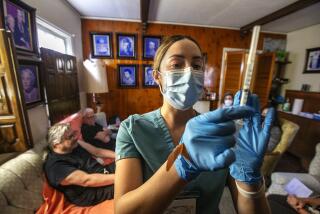Will you need a second booster shot to keep coronavirus at bay?
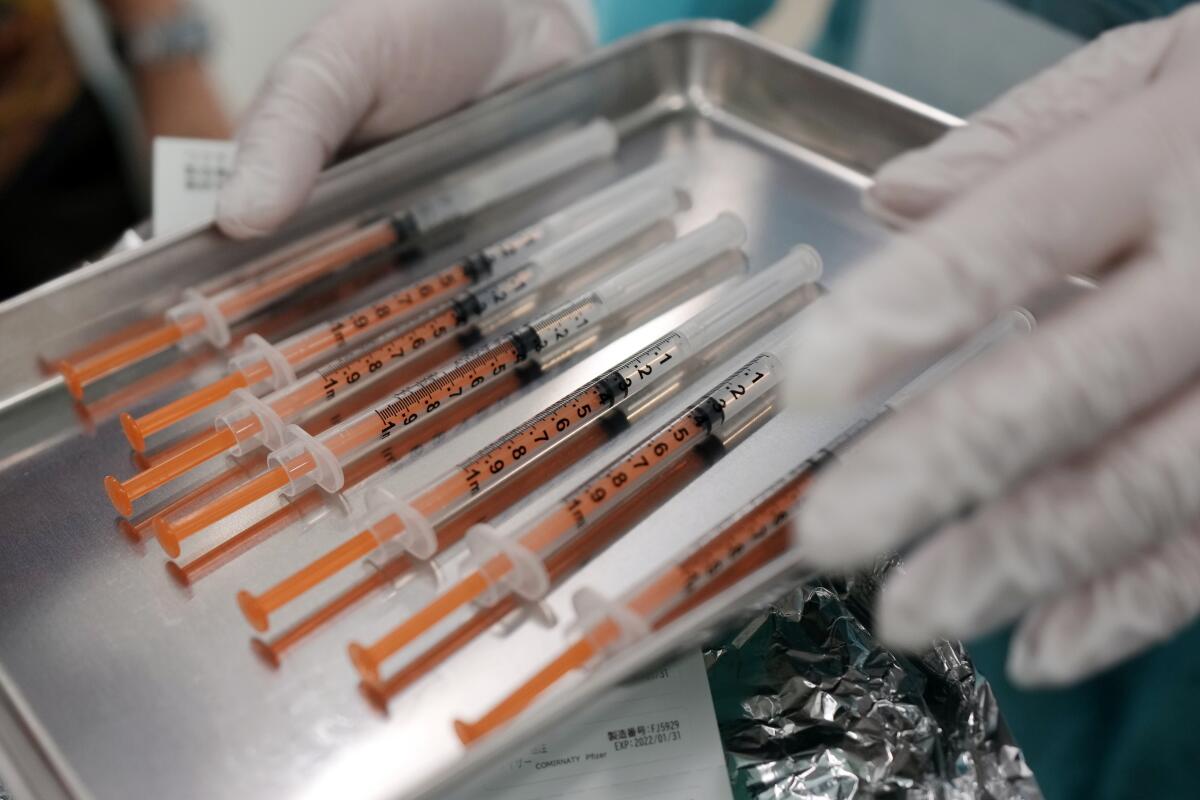
With Omicron fading, there is growing debate among health officials and experts about if or when a second booster shot will be part of this path toward recovery.
Vaccines and boosters proved highly effective against serious illness from Omicron. But what is also clear, though, is that the defense afforded by vaccines — while still robust — tends to wane over time, leaving even some vaccinated and boosted individuals more vulnerable than others.
Data released earlier this month by the U.S. Centers for Disease Control and Prevention examined people who got a booster shot of a Pfizer-BioNTech or Moderna vaccine after completing a two-dose primary vaccination series.
During a time where Omicron was the dominant coronavirus variant, vaccine effectiveness against COVID-related emergency department or urgent care visits for people was 87% during the two months after the booster shot, but that fell to 81% during the third month and dropped to 66% for the fourth month after the booster.
“I think that’s kind of a word of caution,” said Dr. George Rutherford, a epidemiologist and infectious diseases expert at UC San Francisco.
The Los Angeles Unified School District lifts outdoor masking requirements for students and staff. Masks can come off for outdoor recess and sports.
A subsequent booster would seemingly help address the issue of waning immunity. But not everyone is convinced a second booster will be needed anytime soon.
Dr. Anthony Fauci, President Biden’s chief medical advisor, noted last week that a single booster shot still provides high levels of protection against severe disease. During the Omicron surge, vaccine effectiveness against COVID-19-related hospitalization was 91% during the two months after the booster, fell to 88% during the third month and dropped to 78% for the fourth month, according to data published by the CDC.
“Nonetheless, the level of 78 is still a good protective area,” Fauci said, adding that he and other officials will continue studying the need for a second booster shot. “Recommendations, if needed, will be updated according to the data as it evolves.”
The CDC has already recommended that those age 12 and older with moderate or severely compromised immune systems who have already received three doses of vaccinations of the Pfizer or Moderna shots get a fourth dose.
For immune compromised people who got the Johnson and Johnson vaccination as their primary inoculation and have already received a second dose of vaccine, officials now recommend an additional shot, for a total of three doses.
But, “in terms of universal boosting, I don’t think that’s where we’re going to go anytime soon,” Rutherford said, although it’s possible “we may eventually get around to it.”
A CDC report found vaccine booster protection waned but remains strong amid the Omicron wave.
It’s not just U.S. officials that are weighing the issue. Some other countries, such as Sweden, the United Kingdom and Israel, are making second booster doses available to certain populations — such as residents who are older or at higher risk of severe health impacts from COVID-19.
Dr. Robert Wachter, chair of UC San Francisco’s Department of Medicine, tweeted Saturday that evidence of efficacy of second booster from Israel is mixed, however, “so I doubt we’ll have one soon in U.S.; maybe by the fall, as a prelude to an annual COVID shot.”
“Personally, second boost would make me more comfy going maskless, but I’m OK waiting” for additional data, Wachter added.
For most of those living in the U.S., an additional booster dose would mean four shots total — an initial two-dose series of either the Pfizer-BioNTech or Moderna vaccines, plus two subsequent boosters. The shots manufactured by Pfizer and Moderna are collectively known as mRNA vaccines.
For those who initially got the single-dose Johnson & Johnson vaccine, a second booster would mean a third overall shot.
“The potential future [recommendation] for an additional boost or a fourth shot for mRNA or a third shot for J&J is being very carefully monitored in real time. And recommendations, if needed, will be updated according to the data as it evolves,” Fauci said last week.
In San Francisco, health officials have moved ahead of federal guidance and are already allowing Johnson & Johnson recipients to get a second booster shot.
When will the pandemic end? Experts say it’s far too soon to declare victory.
Despite ongoing discussions around the wisdom of even further boosting, many officials say their top priority at the moment is getting more residents to avail themselves of the additional shot for which they’re already eligible.
Recipients of either the Pfizer-BioNTech or Moderna vaccines should get boosted at least five months after completing their initial two-dose series, according to the CDC. The recommended waiting period is two months for those who received the single-shot Johnson & Johnson vaccine.
Statewide, almost 28 million Californians are already fully vaccinated, according to data from the California Department of Public Health. But only about 13.8 million of them have so far gotten a booster.
Significant gaps also persist across age groups. Among Californians who are at least 65 years old, 72.3% of eligible people have already been boosted. The share is lower, 62.1%, for those between the ages of 50 and 64.
However, fewer than half of eligible adults ages 18 to 49 have been boosted so far. And the same is true for only abut 30% of those between the ages of 12 and 17, state data show.
Health officials say dramatically increasing booster coverage — as well as getting more people to roll up their sleeves for the first or second time — is key to reducing not just an individual’s risk of becoming seriously ill with COVID-19, but the dangers posed by potential new surges.
“The work that lies ahead will be focused on the kids who have only recently become eligible, or who remain ineligible for vaccines, to get them fully vaccinated, up-to-date on their immunity — also on boosters, with a particular focus on our older, disabled, immunocompromised citizens, with a focus on closing yet another emerging equity gap in the current administration of boosters,” Dr. Mark Ghaly, California’s health and human services secretary, said during a recent briefing.
According to the latest available state data, unvaccinated Californians remain almost six times more likely to be infected by the coronavirus than those who have been fully vaccinated and boosted. They’re also nearly 12 times more likely to be hospitalized with COVID-19 and 17 times more likely to die from the disease than their fully vaccinated and boosted counterparts.
“Being fully vaccinated provides really excellent protection against COVID-19. But because the vaccine’s protection fades over time, people do need that booster dose to be optimally protected,” said Los Angeles County Public Health Director Barbara Ferrer.
Vaccination should temper the number and severity of persistent symptoms.
Ongoing concerns about the potential for future surges is one reason why some California elected officials have voiced support for COVID-19 vaccination requirements.
A group of Democratic lawmakers is pushing a bill that would require employees and independent contractors to be vaccinated as a condition of employment — unless they have an exemption based on a medical condition, disability or religious beliefs.
And last October, Gov. Gavin Newsom announced a plan to require COVID-19 vaccinations for all public and private schoolchildren. That would initially take effect for grades 7 through 12 for the school term following the U.S. Food and Drug Administration’s full approval of the vaccine for children ages 12 to 15.
Children of that age can currently receive the Pfizer-BioNTech vaccine under emergency authorization, but it isn’t clear when the FDA might give its full approval. The vaccine has been fully approved by the FDA for those 16 and older.
California officials outline a plan that assumes the coronavirus and its variants will ebb and flow, requiring flexibility in such activities as mask wearing.
Unlike with other vaccines required for schoolchildren, Newsom’s plan — because it was not enacted through the Legislature — would allow parents to cite personal beliefs in refusing to inoculate their children against COVID-19.
There are efforts underway to strengthen that pending requirement. One legislator, state Sen. Richard Pan (D-Sacramento), has proposed a bill that would add COVID-19 vaccines to California’s list of required inoculations for attending K-12 schools, which can be skipped only if a student receives a rare medical exemption.
If passed by the Legislature and signed by the governor, the measure would supplant Newsom’s plan.
In an interview broadcast on MSNBC’s “The Sunday Show with Jonathan Capehart,” Newsom touted the state’s handling of the pandemic as one that has saved lives.
Many health experts are strongly recommending the public still wear masks even as the state lifted its order requiring them to be worn in indoor public spaces for vaccinated people.
State health officials have published data showing how California’s cumulative per capita COVID-19 death rate is lower than the nation’s five other most populous states: Texas, Florida, New York, Pennsylvania and Illinois.
Newsom said now is the time to prepare for new surges should they come, such as making sure the state is not caught unprepared yet again with shortages of medical equipment like gowns and N95 masks.
“We’re realizing that we’re going to have to live with different variants of this disease for many, many years,” Newsom said on the program.
More to Read
Sign up for Essential California
The most important California stories and recommendations in your inbox every morning.
You may occasionally receive promotional content from the Los Angeles Times.
